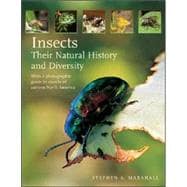
Steve Marshall has been a professor of entomology at the University of Guelph since 1982, where he developed a major insect collection and carries out research on insect systematics and biodiversity. He has discovered hundreds of new species, several new genera, and even two new subfamilies, and lives near Elora, Ontario.
| Preface | 7 | (6) | |||
| Introduction | 13 | (6) | |||
|
19 | (8) | |||
|
27 | (25) | |||
|
52 | (6) | |||
|
58 | (13) | |||
|
71 | (20) | |||
|
91 | (70) | |||
|
161 | (76) | |||
|
237 | (10) | |||
|
247 | (10) | |||
|
257 | (124) | |||
|
381 | (137) | |||
|
518 | (67) | |||
|
585 | (23) | |||
|
608 | (7) | |||
| Insect Picture Keys | 615 | (54) | |||
| Selected References | 669 | (5) | |||
| Acknowledgments | 674 | (1) | |||
| Index of Photographs | 675 | (21) | |||
| General Index | 696 |
The New copy of this book will include any supplemental materials advertised. Please check the title of the book to determine if it should include any access cards, study guides, lab manuals, CDs, etc.
The Used, Rental and eBook copies of this book are not guaranteed to include any supplemental materials. Typically, only the book itself is included. This is true even if the title states it includes any access cards, study guides, lab manuals, CDs, etc.